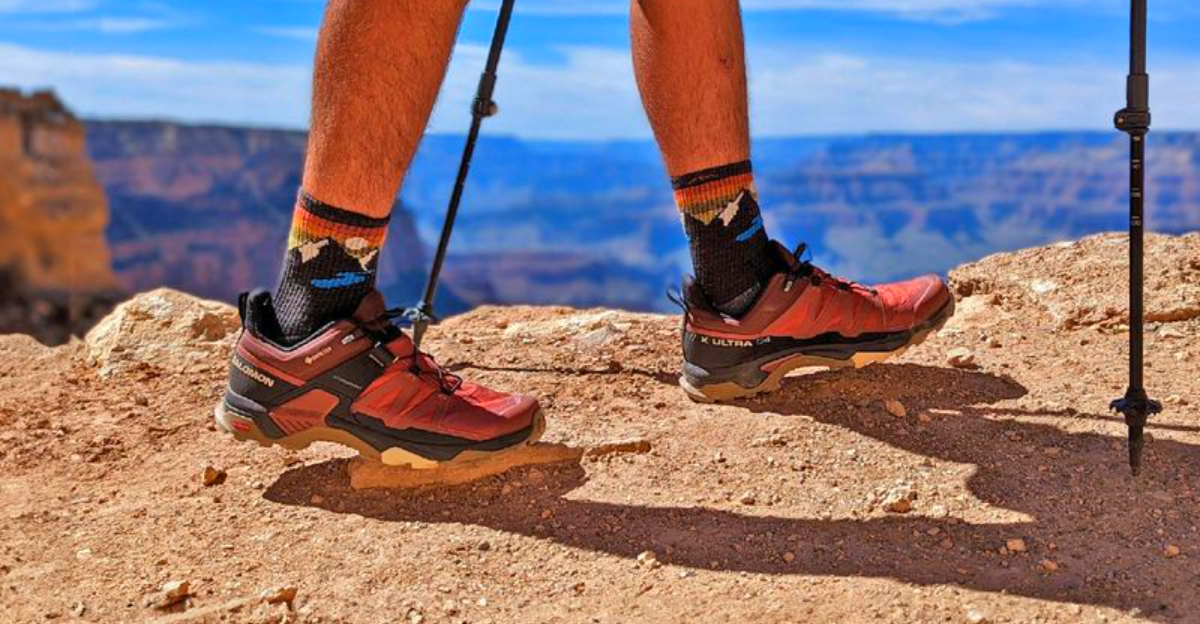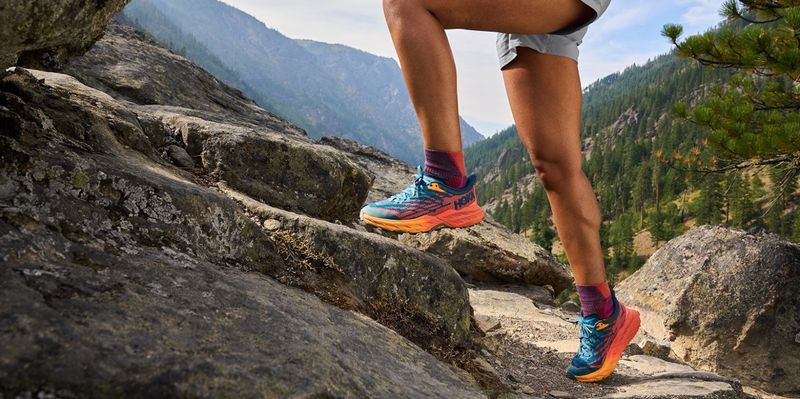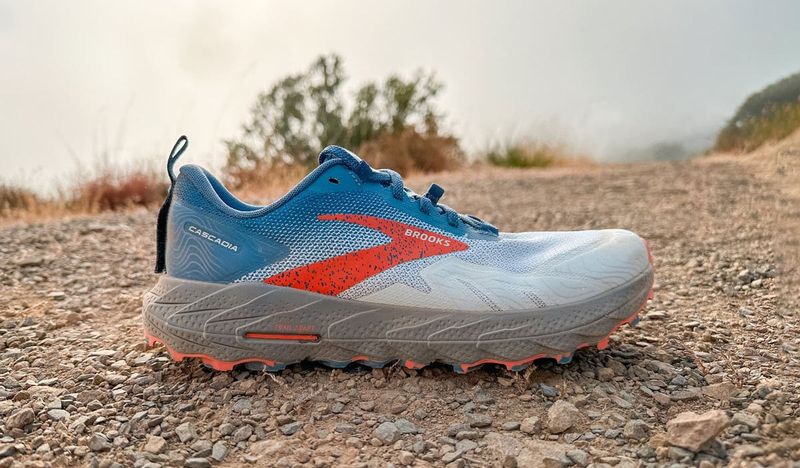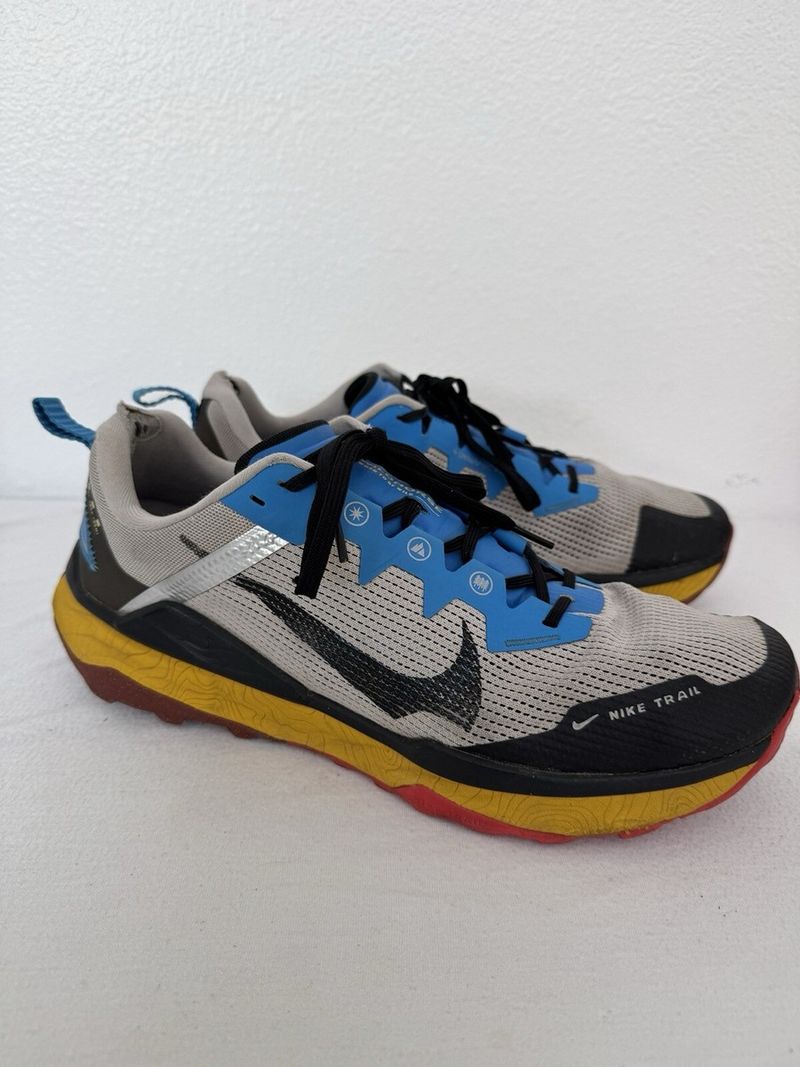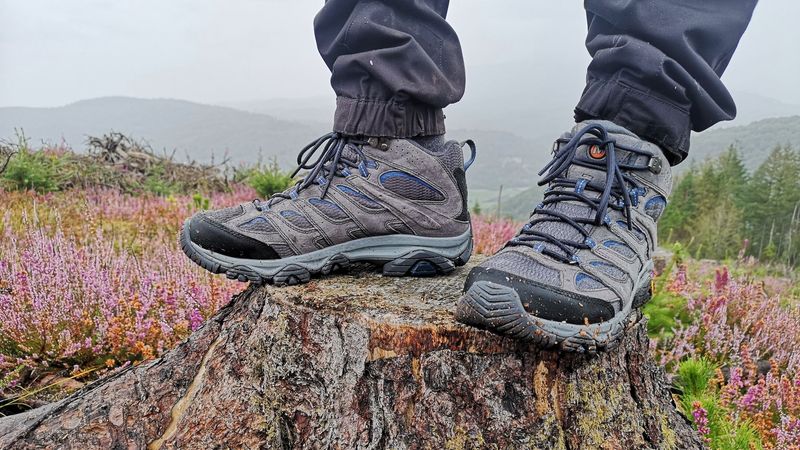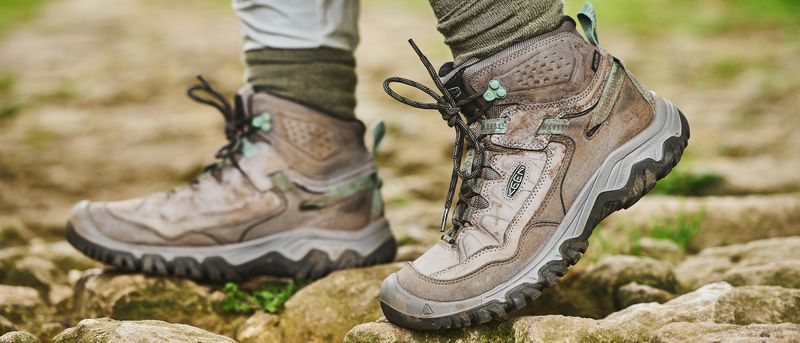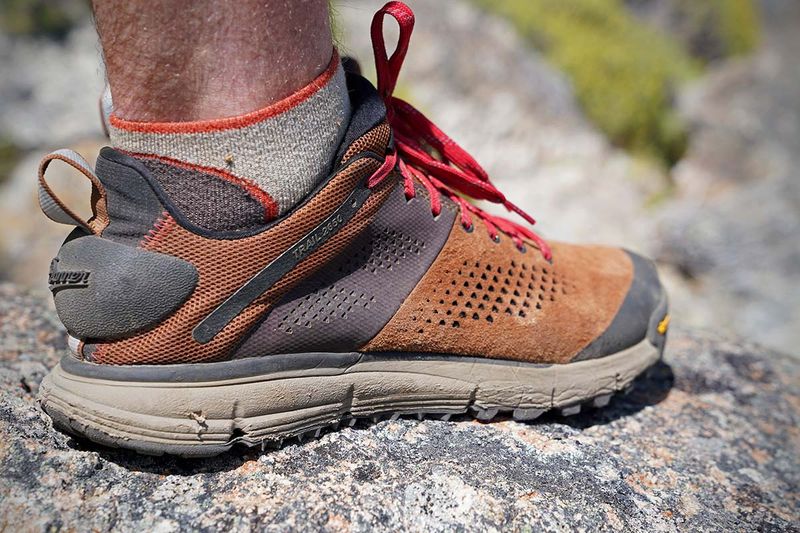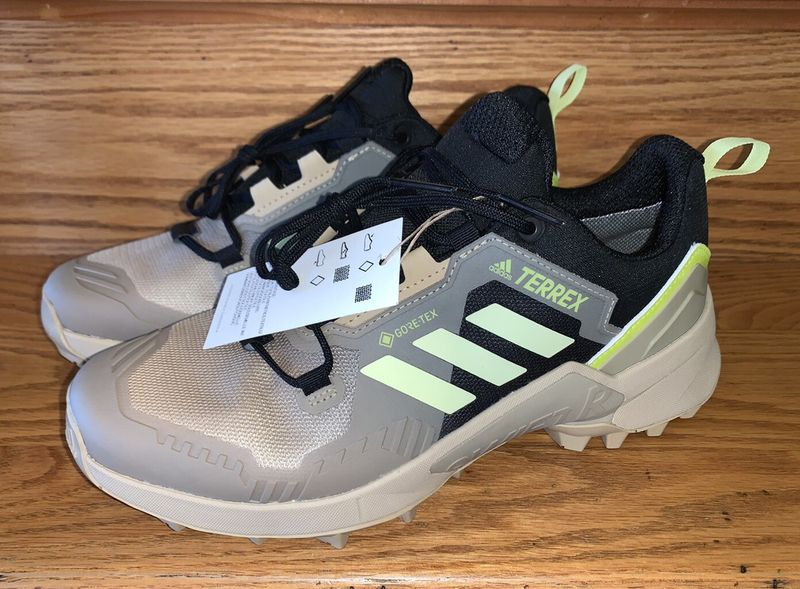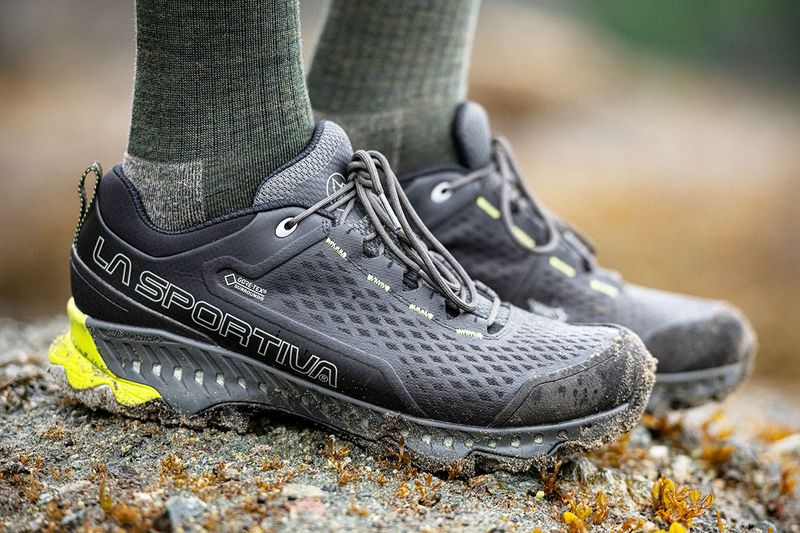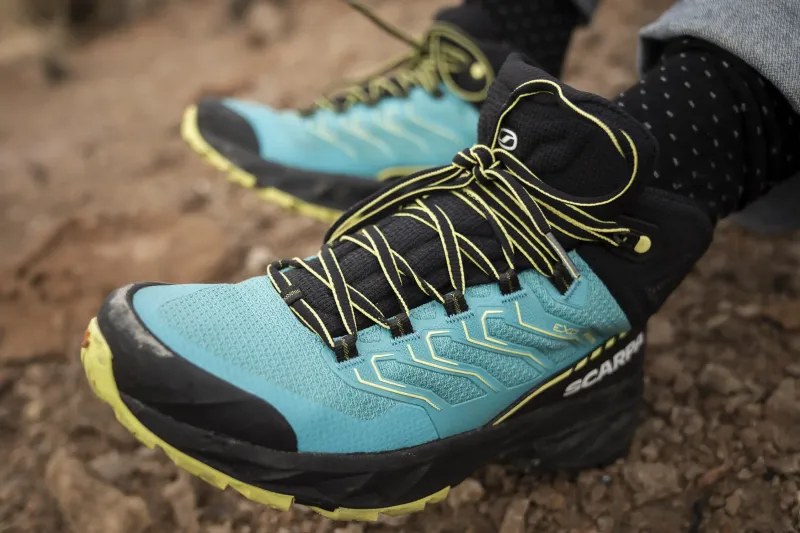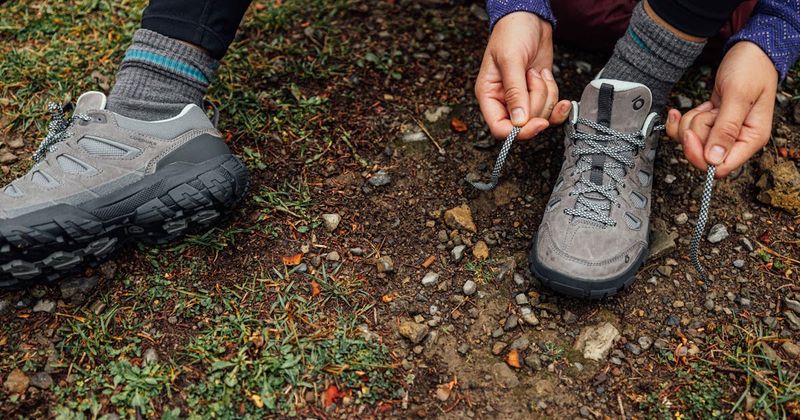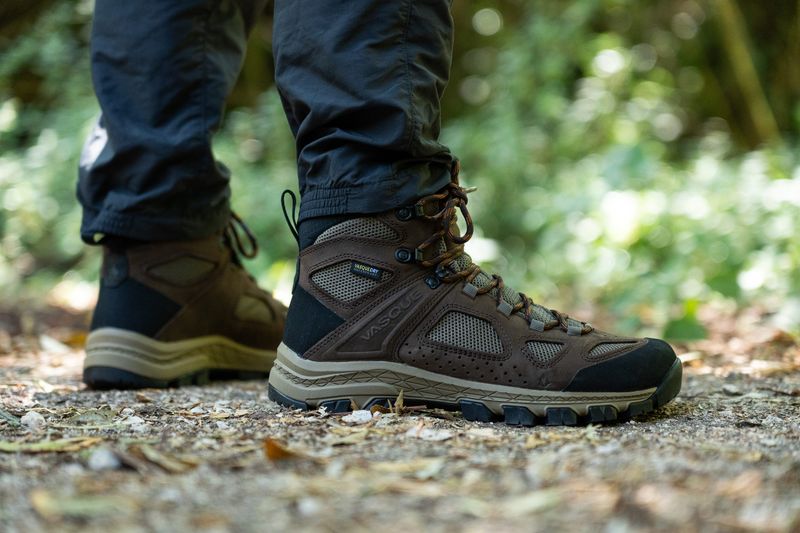Exploring America’s national parks means tackling everything from desert sand to mountain granite, muddy forest trails to sun-baked switchbacks. Your feet deserve gear that can handle the adventure without leaving you with blisters or sore arches by lunchtime. Whether you’re planning a day hike through Yosemite’s valleys or a multi-day trek across Yellowstone’s backcountry, the right pair of hiking shoes makes all the difference between a memorable journey and a painful slog.
1. HOKA Speedgoat 5
Maximal cushioning meets aggressive grip in this trail-running shoe that transitions beautifully to full-day hiking. The Vibram Megagrip lugs bite into loose scree and slick rock with confidence, while the thick midsole absorbs punishment on long descents.
Zion’s Angel’s Landing or Grand Canyon’s rim-to-rim routes throw serious mileage and technical terrain at your feet. This shoe handles both without complaint, keeping your legs fresher when the trail stretches beyond ten miles.
Weight-conscious hikers appreciate how HOKA packs serious protection into a surprisingly light package. Your feet stay comfortable even when the adventure runs longer than planned, making this a go-to choice for ambitious national park itineraries.
2. Altra Lone Peak 8
Zero-drop geometry and a roomy toe box create a walking experience that feels refreshingly natural. Your toes spread out with each step, and the low heel-to-toe differential encourages better posture on those steep Yosemite climbs.
Thru-hikers have long sworn by Altra’s foot-shaped philosophy, and this eighth generation refines the formula with a tougher upper that resists trail abuse. Shenandoah’s rocky ridgelines or the High Sierra’s granite slabs won’t shred these uppers prematurely.
First-time zero-drop users should ease into these gradually, giving calf muscles time to adapt. Once adjusted, many hikers find traditional shoes feel cramped and awkward by comparison, especially on all-day treks through diverse park terrain.
3. Topo Athletic Ultraventure 3
Anatomical shaping pairs with generous cushioning to create a shoe that feels custom-molded right out of the box. Olympic National Park’s wildly varied terrain, from coastal beaches to alpine meadows, demands versatility few shoes can match.
The Vibram outsole grips wet roots and mossy rocks without hesitation, crucial when Pacific Northwest rain turns trails slippery. Plush underfoot padding absorbs the shock of uneven ground without sacrificing trail feel or responsiveness.
All-day comfort becomes the defining characteristic once you rack up miles in these. Blisters and hot spots stay away even when you push past your usual distance, making spontaneous trail extensions a pleasure rather than a painful gamble.
4. Brooks Cascadia 17
Originally designed for trail runners, this shoe crosses over to hiking duty with surprising grace. Protective rock plates shield your feet from sharp Appalachian stones without adding excessive stiffness or weight.
Eastern trails dish out relentless roots, rocks, and uneven footing that test any footwear’s versatility. The Cascadia handles technical sections confidently while remaining nimble enough for smoother stretches, never feeling overbuilt or clunky.
Hikers who value a responsive, athletic feel over traditional boot-like support find their perfect match here. The shoe encourages quicker footwork and more dynamic movement, especially useful when navigating tricky sections or stream crossings on Shenandoah’s or Acadia’s variable paths.
5. La Sportiva Ultra Raptor II
Mountain-goat-level traction defines this technical specialist built for serious terrain. FriXion rubber compound and strategically placed rock guards turn sketchy scrambles into confident ascents, especially on Rocky Mountain National Park’s exposed routes.
Available in low-cut or mid-height GTX versions, you can tailor ankle support and weather protection to your specific needs. Either way, the aggressive tread pattern and sticky rubber deliver grip that inspires confidence on steep, loose, or wet surfaces.
Technical hikers who regularly venture beyond maintained trails appreciate how this shoe handles challenging terrain without requiring full boot support. The precision fit and climbing-shoe heritage shine through when routes demand more than just walking, making this ideal for adventurous park exploration.
6. Nike Wildhorse 8
Stability and versatility combine in this do-it-all trail shoe that surprises skeptics of the swoosh brand. Acadia’s carriage roads and rooty connectors represent the exact sweet spot where this shoe excels, handling both groomed paths and technical sections equally well.
The midsole provides reassuring support without feeling stiff or heavy, while the outsole pattern grips varied surfaces without specializing too narrowly. Smooth national park singletrack becomes effortless, yet the shoe doesn’t flounder when conditions get rougher.
Budget-conscious hikers find excellent value here, especially those who split time between running and hiking. The athletic feel keeps your pace quick on easier sections while providing enough protection and traction for moderate technical challenges throughout most park trail systems.
7. Merrell Moab 3
Ubiquity often signals excellence, and this trail staple proves the point mile after mile. Vibram TC5+ outsoles and shock-absorbing heels create a combination that works for most feet on most trails, explaining why you’ll spot these on virtually every popular park path.
Available in waterproof or ventilated versions, you can match the shoe to your typical hiking climate. The proven design rarely surprises but almost never disappoints, making this an ideal first serious hiking shoe for newcomers to national park exploration.
Solid rather than spectacular describes the Moab experience perfectly. Reliable traction, decent comfort, and good durability at a reasonable price create a package that simply works for day hikes and light overnight trips across diverse park systems nationwide.
8. Salomon X Ultra 4
Agility meets support in this hybrid that moves like a trail runner but protects like a light hiker. Salomon’s chassis technology and Contagrip rubber create exceptional confidence on steep ascents and descents, perfect for Zion’s endless switchbacks or Glacier’s alpine approaches.
The low-profile design encourages quick, precise foot placement rather than plodding boot steps. GTX versions add waterproof protection without sacrificing the nimble feel that makes this shoe shine on technical terrain.
Experienced hikers who’ve graduated beyond heavy boots but want more support than minimalist shoes appreciate this middle ground. The shoe handles serious mileage and elevation gain while keeping your feet fresh and your pace quick through demanding park routes.
9. KEEN Targhee IV
Redesigned bonding between midsole and outsole dramatically extends this shoe’s lifespan. KEEN.FUSION technology addresses the common failure point where sole separation ends many hiking shoes prematurely, especially important on wet, abrasive trails.
Olympic National Park’s perpetually damp, root-covered paths challenge footwear durability like few other environments. The Targhee IV handles this punishment while maintaining waterproof integrity and traction season after season.
Hikers seeking long-term value over cutting-edge features find a reliable partner here. The traditional fit and proven design philosophy prioritize function and longevity, making this an excellent choice for those who’d rather replace shoes every few years instead of every few months.
10. Danner Trail 2650
Burly construction in a surprisingly lightweight package defines this desert-trail specialist. Vibram 460 and Megagrip rubber handle everything from slickrock to sandy washes, while the tough build resists the abrasion that shreds lesser shoes in Arches or Canyonlands.
Danner’s boot-making heritage shows in the quality details and thoughtful construction. The shoe feels substantial without weighing you down, striking that difficult balance between protection and agility on exposed, rocky terrain.
Desert hikers face unique challenges: intense heat, abrasive rock, minimal shade, and long water carries. This shoe addresses those demands specifically, with breathability, durability, and support tailored to Southwest park conditions where traditional hiking shoes often fall short.
11. Adidas Terrex Swift R3 GTX
Stiffness and stability in a low-cut package create a shoe that almost feels like a boot. Waterproof Gore-Tex protection combines with a supportive build that inspires confidence on Yosemite’s notoriously slick granite slabs and domes.
The rigid construction trades some flexibility for exceptional support on technical terrain. Your ankles and feet stay secure even when routes demand careful foot placement on exposed rock or steep angles.
Hikers tackling challenging granite routes appreciate how this shoe bridges the gap between trail runners and approach shoes. The precision fit and climbing-inspired design handle scrambles and exposed sections that leave more casual hiking shoes feeling inadequate or unsafe.
12. La Sportiva Spire GTX
Boot stability blends with runner agility in this technical performer. New England’s national parks serve up challenging combinations of wet roots, mossy rocks, and steep grades that demand both precision and support.
The waterproof construction keeps feet dry through stream crossings and persistent drizzle, while the aggressive tread maintains grip on slippery surfaces. La Sportiva’s mountain heritage ensures this shoe handles serious terrain without compromise.
Technical hikers who need boot-level support but refuse to sacrifice agility find their ideal match here. The shoe excels in challenging conditions where trail runners feel too minimal but traditional boots feel too clunky and slow for dynamic movement.
13. Scarpa Rush 2
Lightweight support meets serious grip in this mountain-ready performer. North Cascades’ variable weather and technical terrain demand versatility, and the Rush 2 delivers with options ranging from low-cut to Pro GTX versions for different conditions.
The shoe handles sudden weather changes gracefully, maintaining traction and protection when mountain conditions shift from sunny to stormy. Scarpa’s Italian climbing heritage ensures the grip and precision needed for exposed alpine routes.
Mountain hikers who regularly encounter mixed conditions appreciate having a shoe that doesn’t force compromises. Whether you’re crossing snowfields, scrambling over talus, or navigating wet forest approaches, this shoe adapts without feeling like a jack-of-all-trades that masters none.
14. Oboz Sawtooth X
Beefy construction and serious support handle backpacking loads without complaint. When Yellowstone adventures include overnight gear and multiple days in the backcountry, this shoe provides the structure and durability needed for heavier carries.
The substantial build doesn’t mean excessive weight, but rather thoughtful reinforcement in key areas. Your feet stay supported and protected even when the pack tops forty pounds and the miles stretch into double digits.
Backpackers tired of boots but needing more support than lightweight hikers find their sweet spot here. Available in low waterproof or mid versions, you can tailor ankle support to your preference while maintaining the load-carrying capability essential for multi-day park adventures.
15. Vasque Breeze
Classic leather construction meets modern comfort in this updated traditional boot. Great Smoky Mountains’ shoulder-season conditions, with unpredictable mud, snow, and rain, demand waterproof protection with enough breathability to handle temperature swings.
The current generation refines decades of proven design, maintaining the durability and support that made Vasque famous while improving comfort and reducing break-in time. Leather uppers provide long-term durability that synthetic materials struggle to match.
Traditionalists who prefer the feel and performance of leather appreciate how this boot delivers time-tested reliability with contemporary refinements. Spring and fall park visits, when conditions vary wildly day to day, showcase this boot’s versatile weather protection and dependable traction.
